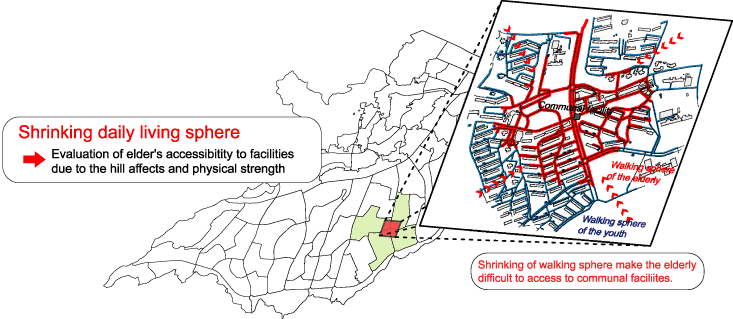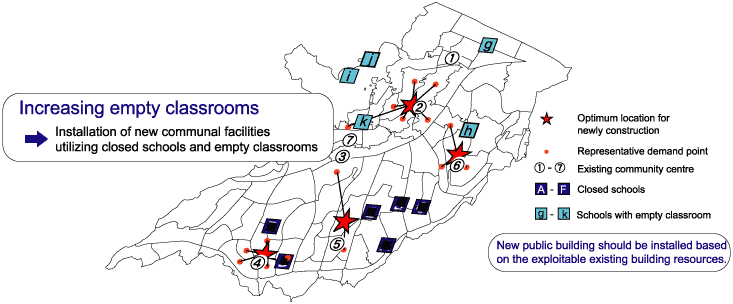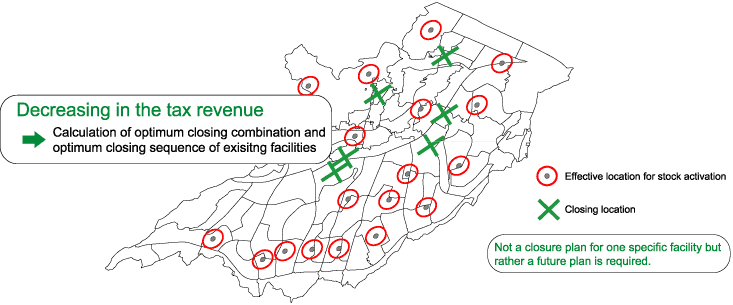Location of Public Buildings and Re-allocation of Public Facility Services
1. Re-allocation of public facility services crossing the border of public buildings
In the second half of the 20th century in Japan, a variety of local communal facilities were constructed close to each other as systems changed and improved to respond to the demand of the age. In Tama City, for example, many local communal facilities were built at the time of the development of Tama New Town. In addition to seven community centers in the large suburban development, there are facilities with similar functions nearby. The conversion of local communal facilities was regulated with such conditions as returning of subsidies to do so. However, a drastic change in the operation of such facilities became necessary and the regulation is being lifted due to constraints of public finance, worsening of environmental issues and declining birth rate in the aging of society. This is bringing the opportunity to understand the public building stock comprehensively and reallocate the local communal facility services.
2. Consideration of local demand, distance and location of stock
Because needs for local public services differ by age group, future demand is predicted based on the future population projection. The phenomenon of the declining usage rate as the distance to the facility becomes longer is called decline due to distance. The decline differs by the type of service and age group.
In Tama City, a decrease in the total population and further declining birth rate and aging of the community are expected. For elderly people, as it becomes hard to ride a bicycle and the range in which they can move on foot becomes smaller, the decline due to distance becomes significant and their daily living sphere becomes small. Because Tama New Town is located on a hill, the hill affects the area in which the elderly people can move to a degree that cannot be ignored. The number of closed schools and empty classrooms increases as the number of elementary and junior high school students decreases. Decreases in the number of the total population and the population of productive age mean a decrease in the tax revenues in addition to more demand for local public services. Thus it is more practical to utilize existing stock rather than building new facilities.
Taking this into consideration, we show the result of the forecast of future demand for rental rooms in community centers based on the future population projection, current demand by age group and decline due to distance. Because it is difficult to satisfy all the demand, we set a condition of keeping the rate of all the room being occupied at a certain rate. We found out that only the demand for halls will not be satisfied with the existing community centers. If there is a closed elementary or junior high school near the optimum location with minimum moving distance for users, it can be used as the hall. If there is no closed school, empty classrooms in nearby schools can be used as a hall.

3. Assess buildings that should be kept based on relative location
If the demand and tax revenues decline, not only conversion but also keeping important buildings and closing others are also an option. It is not wise to assess which buildings are to be kept simply based on each building such as the degree of its deterioration. When there is high demand for a building in the area or when there is no replaceable building nearby, it becomes important even if it is old, whereas a building can be closed if there is a similar facility nearby.
In closing facilities one after another, the final allocation of facilities can differ significantly between when the closure is decided one by one and when future facility allocation is considered to decide the closure. Not a closure plan for one specific facility but rather a future plan is required.



